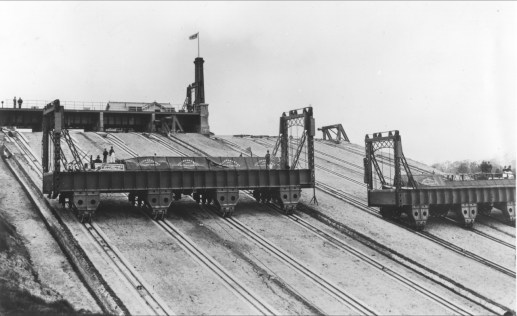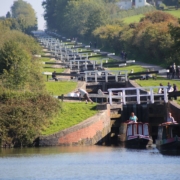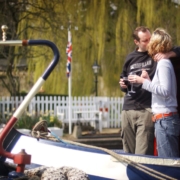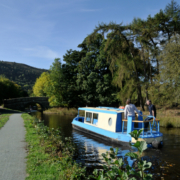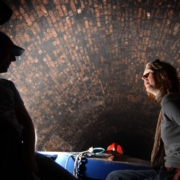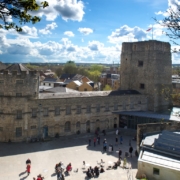Top 6 Canal Mysteries
Britain’s 2,000-mile long and 200-year old canal network is a treasure trove of historic structures, a haven for wildlife and is steeped in folklore and mystery.
To celebrate the rich tapestry of canal history and habitat, here at Drifters we’ve put together our Top 6 Canal Mysteries for visitors and holiday-makers to explore:
- Why was the incredible Foxton Inclined Plane Boat Lift a white elephant? Next to Foxton Locks, on the Grand Union Canal Leicester Line, visitors will find a tiny Museum dedicated to the Foxton Inclined Plane boat lift – an extraordinary feet of Victorian engineering which once operated there. When engineers began working on the construction of the Grand Union Canal, Benjamin Bevan solved the major challenge of raising the canal 75ft up a steep escarpment at Foxton with two flights of five staircase locks, completed in 1814. However, by the end of the 19th century, as a result of competition from the railways, commercial traffic on the canals was in significant decline. In 1893, local factory owners and boat companies encouraged the Grand Junction Canal Company to make improvements so that the canal could take larger boats and better compete with the railways. Plans were approved for the plane in 1897 and building work began. Two counterbalanced caissons (giant bathtubs) that could each hold two narrowboats or one wide-beam barge, were built to slide up or down the hill on tracks. They enabled boats to make the journey in just 12 minutes – nearly six times quicker than going through the locks. Opened in 1900, sadly it was never a commercial success due to decreasing canal traffic and the fact that the Watford flight was never widened to take larger boats. The plane was mothballed in 1911 and dismantled for scrap in 1928. *Drifters nearest canal boat holiday starting points are at Market Harborough and Braunston.
- Why are there pill boxes along the K&A? When walking along the towpath or cruising along in a boat, visitors to the Kennet & Avon Canal, which connects the River Thames at Reading with the Bristol Avon at Bath, will notice a large number of pill boxes lining the waterway. Designed by the War Office, these fortifications were commissioned by General Sir Edmund Ironside, following the British Expeditionary Forces’ evacuation from Dunkirk, and the prospect of imminent German invasion. Named GHQ Stop Line Blue, the canal was equipped to be a static defence line, with the pill boxes and trank traps manned by the Home Guard. *Drifters offers canal boat hire on the Kennet & Avon Canal from Aldermaston (near Reading), Devizes, Hilperton (near Trowbridge), Bradford on Avon and Bath.
- Why do canals sometimes turn green? When summer temperatures soar, thick carpets of bright green duck weed can appear along sections of Britain’s canals, especially in London. While an individual piece of duck weed is no bigger than a ladybird, when they multiply into large numbers, they clog up canals, starving the water of oxygen and sunlight, and causing problems for some wildlife. In the right conditions, a mass of duck weed can double in size every two or three days. The weed also accumulates litter, can be problematic for boats, and dogs and other animals have been known to mistake it for grass and end up in the water. When the duck weed takes hold, the Canal & River Trust deploys weed clearing machines and the charity has installed a bubble barrier in on the Paddington Arm of the Grand Union Canal to help keep litter and duck weed in check.
- Why have some people seen a second route in the Blisworth Tunnel? On the Grand Union Canal at Stoke Bruerne in Northamptonshire, the 2,795-metre long Blisworth Tunnel has spooked a number of boaters over the years. When construction began in 1793, the tunnel was a major engineering challenge. Teams of navvies worked with picks and shovels for three years until they hit quicksand and the tunnel collapsed, killing 14 men. A new route for the tunnel was found and it finally opened on 25 March 1805. But over the years, a number of boaters travelling through the tunnel have reported seeing lights and a second route emerging. As the tunnel runs straight through the hill, the only explanation is that these people must have seen the ghostly flicker of candlelight at the spot where the first tunnel would have intersected with the main canal tunnel. *Drifters nearest canal boat hire starting points are at Rugby, Stretton, Braunston, Stockton and Napton.
- Why are there Terrapins on our canals? Red-eared terrapins are now a common sight on England’s waterways, largely as a result of the Teenage Mutant Ninja Hero Turtles cartoon craze which began in the 1980’s. Imported from the USA to be sold as pets, these terrapins can grow to the size of a dinner plate, making them less appealing and difficult to manage. Consequently, they are often irresponsibly released into the wild and can be seen basking on dry land during sunny days. At the moment it looks unlikely that they are breeding as terrapin eggs need to be incubated at 25 degrees Celsius for 60 days in order to hatch, but climate change may enable them to increase their numbers and potentially harm native animals. *Terrapins are regularly seen at Fradley Pool Nature Reserve, at Fradley Junction where the Coventry Canal meets the Trent & Mersey Canal. Our nearest canal boat hire bases are at Great Haywood and Stretton.
- Why is the Hatton Flight also known as the Stairway to Heaven? The spectacular Hatton Flight of 21 locks on the Grand Union Canal in Warwickshire, raises or lowers boats by 146 feet across two miles. The men and women who operated the working boats which carried cargoes on the canal, knick-named the Hatton flight ‘The Stairway to Heaven’, because of the hard work involved in the long ascent, and the subsequent easy run to Camp Hill where they were paid. *Our nearest canal boat holiday starting points are at Stockton, Warwick and Wootton Wawen.

